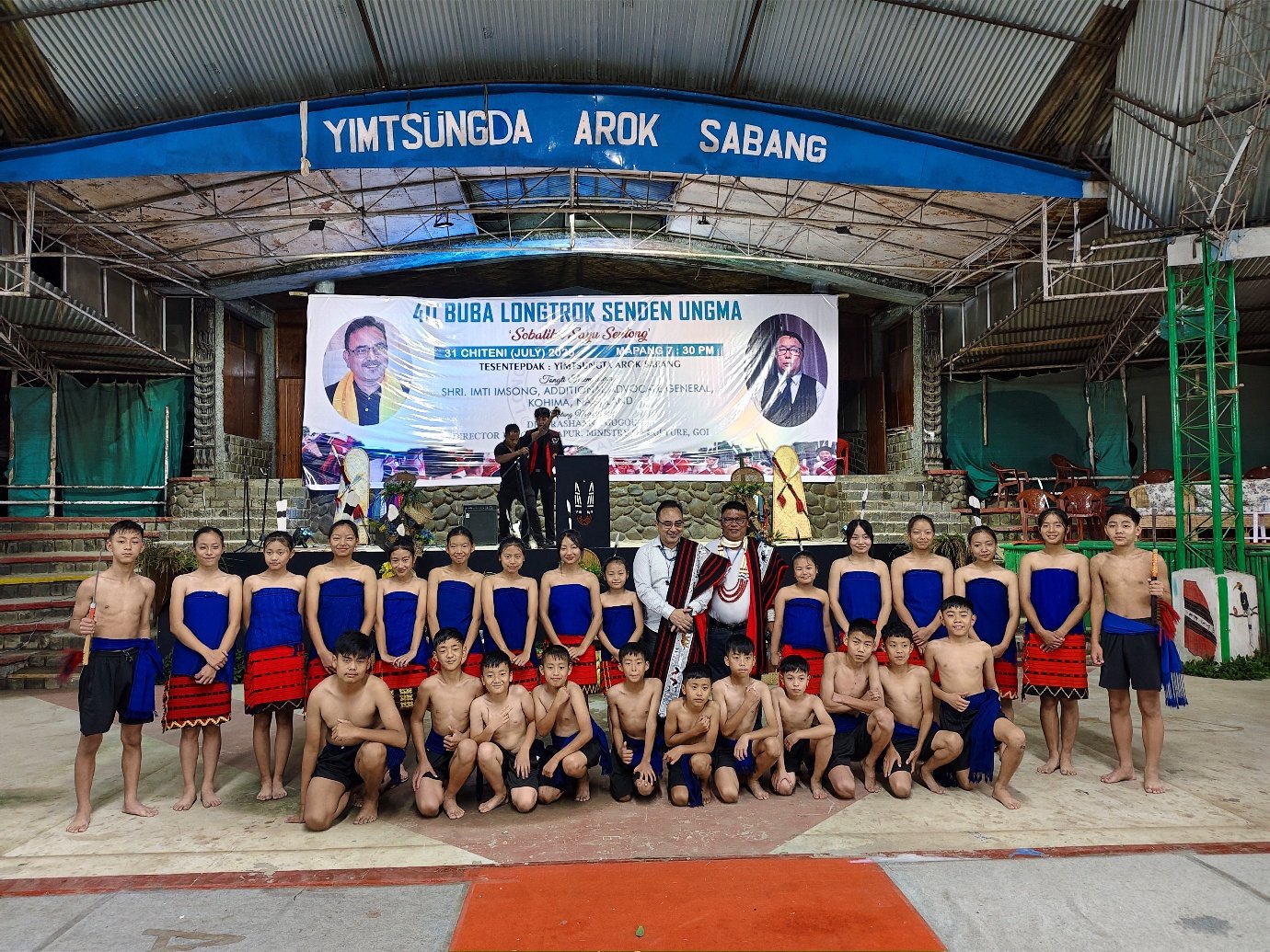The 40th edition of Longtrok Senden Ungma’s “Sobaliba Sayu Sentong” (cultural show) was held on July 31 at Yimtsungta Arok Sabang, Ungma, Mokokchung.
Additional Advocate General Nagaland, Imti Imsong who graced the occasion as the chief guest expressed appreciation for the event. While acknowledging the abundance of talent among the people, he stressed the need for introspection and discipline.
“We must change many things within ourselves. Discipline and adaptability — the ability to match the energy of others and adjust to any situation — are essential qualities we must cultivate,” Imsong said.
Lauding the ten participating clubs of Ungma village for their contributions to preserving culture, he underscored on how to truly respect culture. Reflecting on the past, he acknowledged that over the last 50 years, significant hardships must have been endured — particularly in terms of labor — to keep such traditions alive. He offered practical suggestions for organizing cultural programmes more efficiently.
“Let us not waste time on inviting chief guests or guests of honour unnecessarily,” he said, adding, “If we lack financial stability, learning to be economical in hosting events is crucial.”
He proposed the concept of a “Cultural Village,” suggesting that just as Ungma is celebrating its heritage today, neighboring villages should be involved and encouraged to share their cultural traditions as well.
Download Nagaland Tribune app on Google Play

“Sharing our culture with surrounding villages is very important,” he emphasized.
Touching on cultural content, he called on the community to expand its creative expressions. “Let us not limit ourselves to folk dances, songs, and fusion alone,” he said. “We often focus on the Hornbill Festival, but we must go beyond that. Our culture must be reaffirmed and modified where necessary.”
He also highlighted the importance of folk mime, explaining that it involves storytelling through acting — portraying narratives without words. “This is another vital form of cultural expression that must be explored,” he added.
Speaking on the value of culture in the modern context, he questioned, “What government policies do we have today to support this?” and proposed that cultural ballet could become a powerful medium to showcase and preserve Naga identity.
He also elaborated on the richness of Naga dances, stating, “The drum is our master instrument, but we currently use only one sound from it. Why not explore and modify it to produce different tones? There is so much potential in our traditional instruments.”
Imsong concluded with a strong message: “Culture is a path that helps us. It preserves not only our traditions but also our environment, our wild animals, and our stories. We must respect and take pride in our culture.”
Director NEZCC Dimapur, Dr. Prashanna Gogoi who attended the event as the guest of honour, in his address, said that the development of a society is deeply rooted in the preservation of its culture and traditions.
He shared, “Through the ‘Keeping Theresas Alive’ initiative, I have seen Ungma — a village that truly reflects the cultural richness of Mokokchung district in Nagaland, the land of festivals.”
He noted that the representation of Naga tribes at both national and international levels is clearly visible and commendable.
Gogoi remarked that the Nagas have kept their identity intact, passing it down from generation to generation.
“Today, I witnessed the little ones dancing their traditional dances so beautifully — this is tradition,” he said, adding, “If we lose our tradition, we lose our identity.”
Referring to the influence of modern culture, he said, “We cannot deny the influx of Western influence, but our folk dances, songs, and music are very important — this is the mother culture. At least, you can say with pride that you are an Ao, because this is your tradition.”
He encouraged the performers and said that a troupe from Ungma should represent
Mokokchung at the national level. He requested the jury to select the best of the best, who will go on to perform at the National or international for Northeast Zone Cultural Centre (NEZCC).
He also spoke about scholarships offered by the Ministry of Culture under the Centre for Cultural Resources and Training (CCRT) for young talented artists, encouraging wide participation from across Nagaland. “These scholarships are for children aged 10 to 14, and continue up to the degree level. After that, they can apply for young artist awards, fellowships, and more,” he explained
He appreciated the mentors and “gurus” of Ungma village for guiding and nurturing the younger generation. To the participants, he said, “You are the ones who will carry this beautiful culture forward — you are the embodiment of your tradition.”
The official also acknowledged the support of parents and guardians, saying that Ungma is not only for the Ao community but for other communities too and it is a multi-community village seeing the participation from other communities.
Proposing a collective celebration, he further suggested organizing a common Harvest Festival.
Meanwhile, United Soyim Club emerged as the champions of the 40th Longterok Senden Ungma cultural show competition which saw the participation of nine clubs. Oriental Club secured the second position. All participating clubs were awarded certificates in recognition of their participation.

